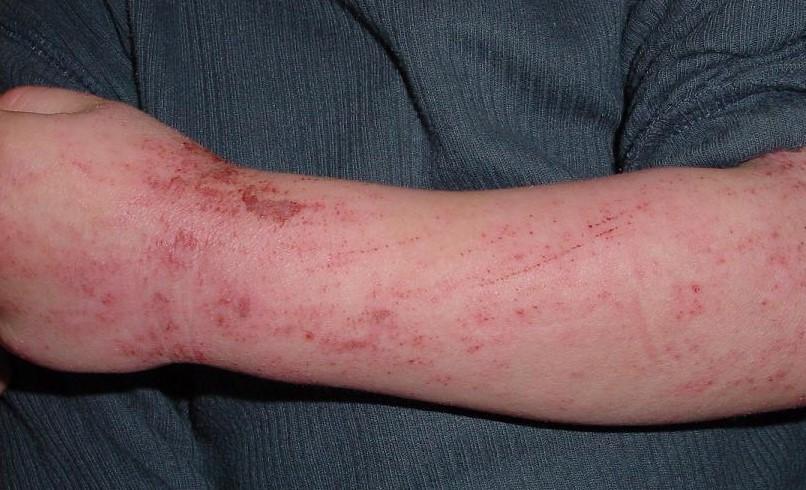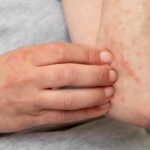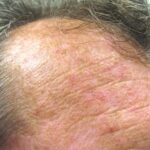Learn more about eczema and treatment options
What is eczema (dermatitis)?
Eczema is a skin condition that can cause the skin to swell, discolor, itch, dry out, or even blister. It takes the acumen of a board-certified physician dermatologist to determine which kind of eczema it is and how to successfully treat it.
Atopic Dermatitis
Atopic dermatitis is an inherited form of eczema that is commonly found in children and babies. Their skin may become itchy leading to the formation of a rash. These rashes can appear anywhere on the body and most often appear as dry scaly patches. In older children, it is more often found in the folds of the body. If atopic dermatitis is not properly treated, it can potentially lead to significant physical, emotional, and social discomfort. Most children outgrow atopic dermatitis after a number of years, but it can return in a different form in adulthood.
Contact Dermatitis
Objects that touch our skin can also cause contact dermatitis, which is essentially an irritant or allergic reaction. Nickel, latex, and quaternium-15 are some of the most common triggers for contact dermatitis. Contact dermatitis can be caused either by an irritant substance (more common) or via an allergic response (less common). Coordination with an allergist for patch testing may be needed.
Dyshidrotic Eczema
This form of eczema is located on your hands and feet and can cause burning, itching, and blisters. A variety of advanced treatments are now available to treat this condition.
Nummular Dermatitis
Nummular dermatitis characteristically shows up as coin-shaped circles anywhere on the body. This coin-shaped rash is often misdiagnosed as ringworm.
Seborrheic Dermatitis
Seborrheic Dermatitis is a common skin condition that presents as a red and swollen rash, with a white crusty scale on its surface. Although this skin condition is most often referred to as cradle cap in infants, seborrheic dermatitis can also occur in adults. Transition and fluctuation in weather often worsens seborrheic dermatitis.
Stasis Dermatitis
Stasis dermatitis occurs when the veins in your legs have difficulty sending blood back to the heart, which then causes it to pool into the legs, ultimately affecting the color of your skin and leading to an itchy and discolored rash.
At Apollo Dermatology, we are able to treat eczema with using medical dermatology treatments such as topical steroids, topical calcineurin inhibitors, phototherapy, bleach baths, and even biologics such as Dupixent for severe cases.
Make an appointment with our board-certified dermatologist, Dr. Dupati, today!
Apollo Dermatology – Board Certified Dermatologist Office serving Auburn Hills, Lake Orion, Rochester Hills, Troy MI, and all of Southeast Michigan
OFFICE HOURS
Monday:
9 AM – 6 PM
Tuesday:
9 AM – 6 PM
Wednesday:
9 AM – 6 PM
Thursday:
9 AM – 3 PM
Friday, Saturday & Sunday:
Closed
ADDRESS:
Apollo Dermatology, Board Certifified Dermatologist in Rochester Hills
555 Barclay Circle
Suite 170
Rochester Hills, Michigan
48307
DIRECTIONS:
Apollo Dermatology – Board Certified Dermatologist Office serving Auburn Hills, Lake Orion, Rochester Hills, Troy MI, and all of Southeast Michigan















